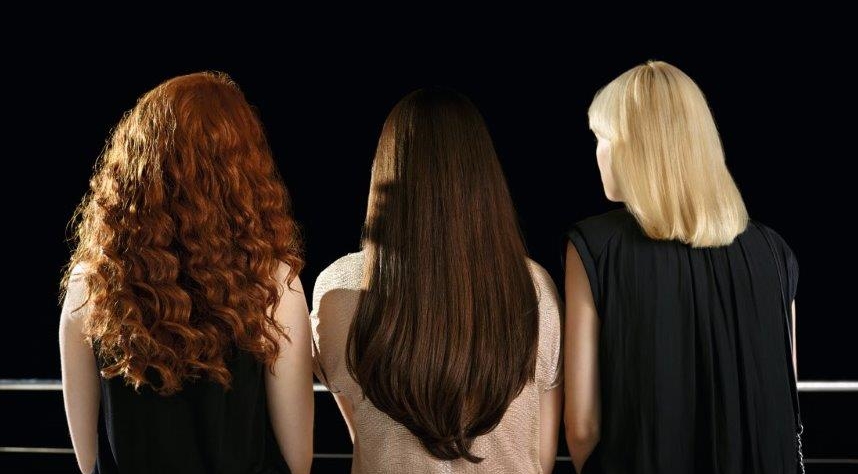
Hair and scalp
The thing about curls
Why do we have curls? Let’s start by saying right away that this question from the world of hair isn’t so easy to answer either. We look into the hairy matter with our colleague Dr. Hans-Martin Haake, Head of Application Technology Personal Care at BASF.
How do you prefer it: straight or curly? Hair is important for the soul, for our self-confidence and for our personal satisfaction. Having beautiful curly hair is a dream for many people. And if you have straight hair, sometimes you need to use technology and chemicals to create your own curls. We are not going to talk about caring for curly hair or even perms. Instead, we’d like to look into the why of it all. As in: “Why is some hair naturally curly?”
The answer to this is not entirely straightforward. From a scientific point of view, the reason why hair is curly has not yet been fully identified. Discussion surrounding the matter is very heated. Hair science is a complex field in the personal care sector and still offers great potential for discussion and room for various opinions and conclusions in many areas. Our search for the origin of curls has revealed one thing: there are plenty of assumptions and claims out there. There doesn’t seem to be one single cause – rather it is the interplay of reasons and factors that makes the difference between straight and wavy.
Oprah comes into play with the curls
You may be familiar with the different skin types from one of our articles about skin and sun protection. Knowing your skin type is especially important when it comes to getting the right UV protection. There is also a means for categorizing hair: a system that classifies and describes the different hair types. Andre Walker was responsible for the “Hair Typing System.” Walker, an Emmy-winning hairstylist best known for his work on the Oprah Winfrey Show, divides hair into four types:
- straight
- wavy
- curly
- kinky.
Wavy, curly and kinky hair come under the umbrella term “textured hair.” Walker’s system is further broken down into subtypes from A to C, which describe, for example, the distance and diameter of the curls. By the way: the fact that straight hair is in position 1 has nothing to do with it being better or worse. They are really just categories for identification, not ratings or quality grades.
Further identifications or classifications of different hair types can be found in ethnic hair. For a long time, the following classifications were used:
- Asian hair
straight, black, round cross-section - European or Caucasian hair
black-blond, straight-wavy, slightly elliptical (round to oval cross-section) - African hair
curly to very kinky, black, very elliptical
However, this classification is very simplistic and more groups have since been added. This is understandable, as there are many people who, for example, have wavy or curly Asian hair, or even straight or curly Caucasian hair.
Hair is more than an appendage
From a scientific point of view, hair is part of the skin. Biologists use the somewhat unwieldy term of adnexa, or “skin appendages,” to describe it. The nails on our fingers and toes are also skin appendages. Skin appendages consist mainly of keratins, a class of protein found in the skin, hair and wool. The visible part of the hair is the hair shaft. This “dead” material plays a defining role in our appearance. The hair shaft is made up of three layers: cuticle – cortex – medulla.
The goosebumps
As thin and fine as hair follicles are, there is actually a small muscle in each one. This muscle is able to straighten the hair. The next time you’re in a scary situation and your hair stands on end or you get goosebumps, you’ll know that thousands of mini muscles are working together.
By the way, not all hair is the same. We distinguish between different types of hair that occur during different phases of life or at different ages. The nature of hair varies quite significantly. Vellus hair is the fine, short hair on the body. It is very recognizable in the fine fluff on the skin of babies and small children. Terminal hair refers to the hair on your head, facial hair, eyelashes, eyebrows and pubic hair. This also includes male body hair, for example on the chest or stomach.
But let’s get back to our curls. A lot has been written about curls: in addition to care and styling, there is the question of “Why is some hair naturally curly?” Reason enough to ask our colleague Dr. Hans-Martin Haake, Head of Application Technology Personal Care at BASF, a few questions.
One alleged fact about curls made us smile: In 95% of right-handed people, the hair curls in a clockwise direction. There is no preferred curling direction for left-handed people.
Hans-Martin (with a wink): This is a theory that has been around for many years. It was first introduced by American genetic researcher Amar Klar. He made his observations because he was looking for a gene that was responsible for being right-handed or left-handed. Let’s leave it at that.
Hans-Martin, if we look at people from Asia, we’d expect to see typical, classic straight hair that is anatomically based on the round cross-section of the hair...
Hans Martin: Yes, you might think so. But like many things in science, the reality is sometimes different than what you had in mind. Sometimes things just aren’t that simple.
What exactly do you mean?
Hans Martin: Just think of what happens when you combine water with dry hair. (More information: The myth about “dry hair”) Assuming that the cross-section of the hair is responsible for curls or no curls is probably too simplistic and doesn’t give us the complete picture. The study “The what, why and how of curly hair: a review” yielded a surprising result. Although Asian hair is considered “straight,” 47% of Japanese participants in a sample had curly hair. Their curl radius varied between 0.6 and 16 cm. In other words, we can’t simply say that Asians have straight hair.
What are the theories about curls?
Hans Martin: One explanation is that the shape of the hair follicle determines whether the hair becomes curly or straight. You can think of it like an extrusion process. It is the shape of the follicle – the “nozzle,” so to speak
– that determines whether straight or curly hair is created. The other explanation takes the distribution of the different keratin proteins and aggregates as its basis. The hair growth process is very complicated. Cells containing various
keratin proteins are produced in the hair root. These cells are pushed upwards as the hair grows. In this way, keratins aggregate and form various complex structures. As the process continues, the cells further differentiate themselves, they keratinize,
lose water and die, and the proteins they contain form very complex structures. According to this theory, the distribution of the different cell types in the cross-section determines whether a hair is curled or not.
One final explanation for curly hair…
Hans Martin: Presumably both of the above mechanisms play a role, and this may be to varying extents depending on the individual. As I said, hair growth is an extremely complex process.
Thank you for taking the time to speak with us.
We’ll keep investigating. And whether you have straight or curly hair – style and care for your hair however you like and in whichever way makes you feel good. If you do that, then bad hair days really don’t stand a chance.
You can also find interesting information on this topic at: „Why is hair curly?—Deductions from the structure and the biomechanics of the mature hair shaft.“


